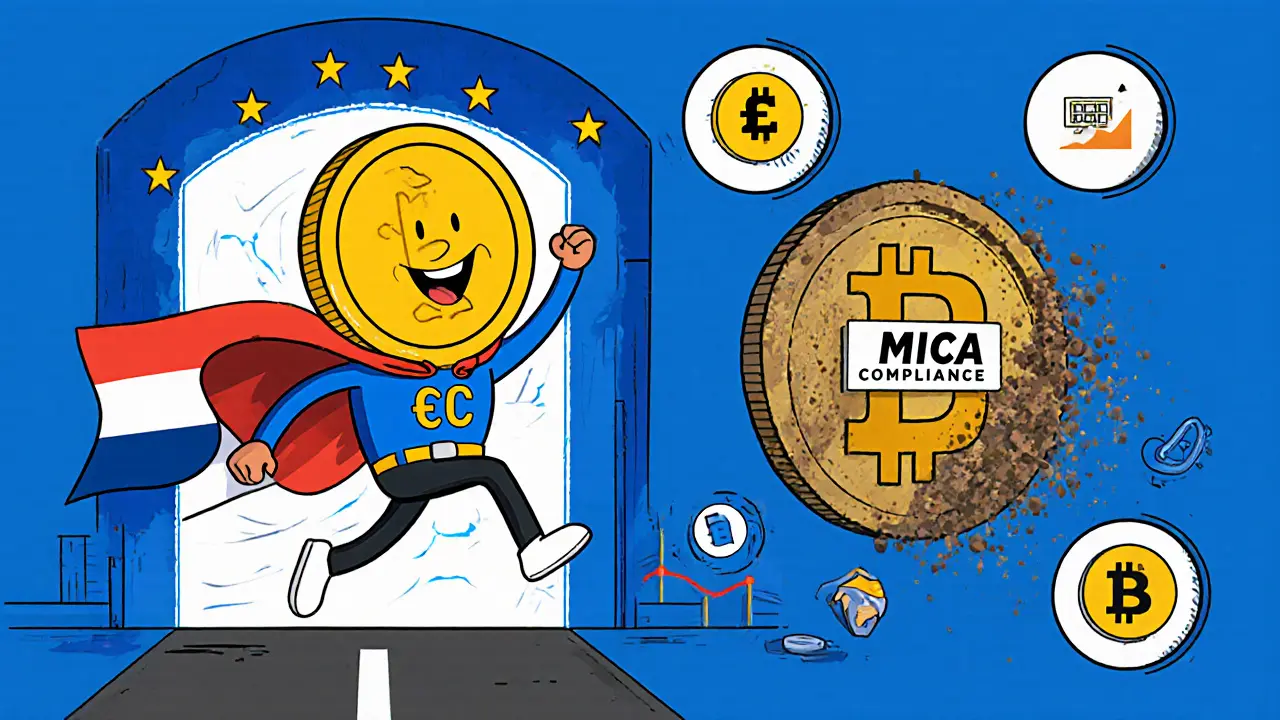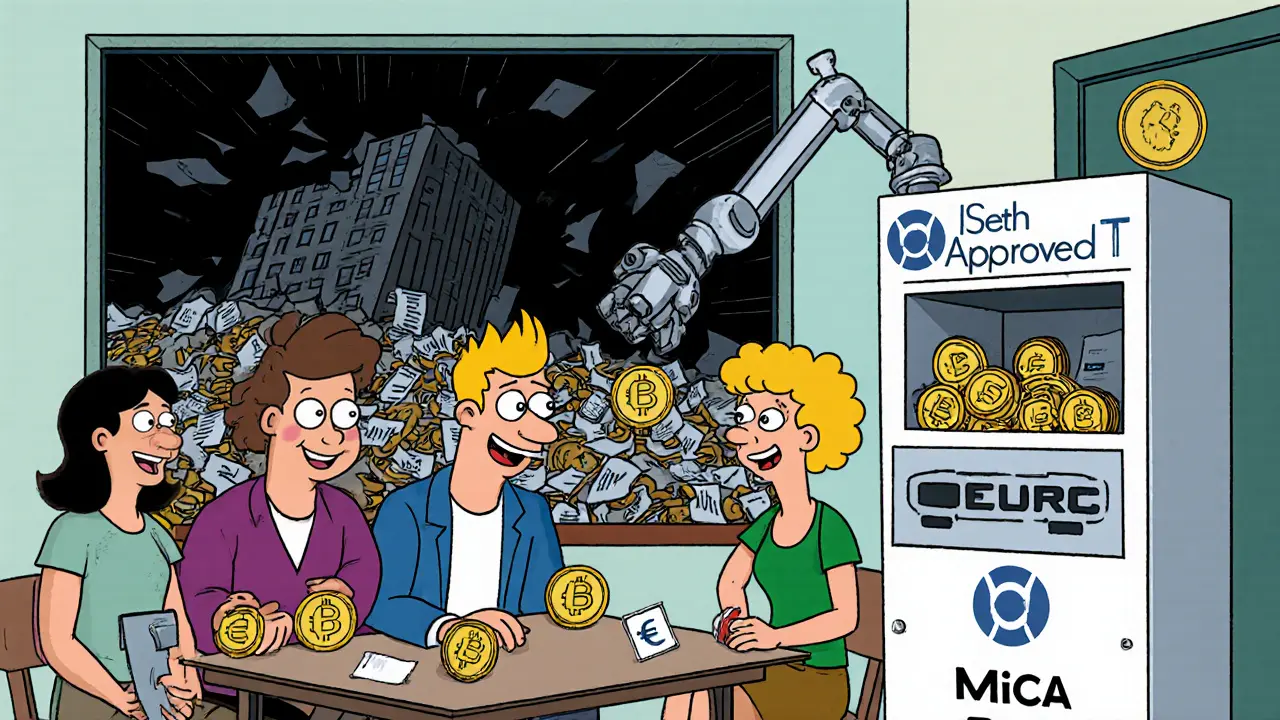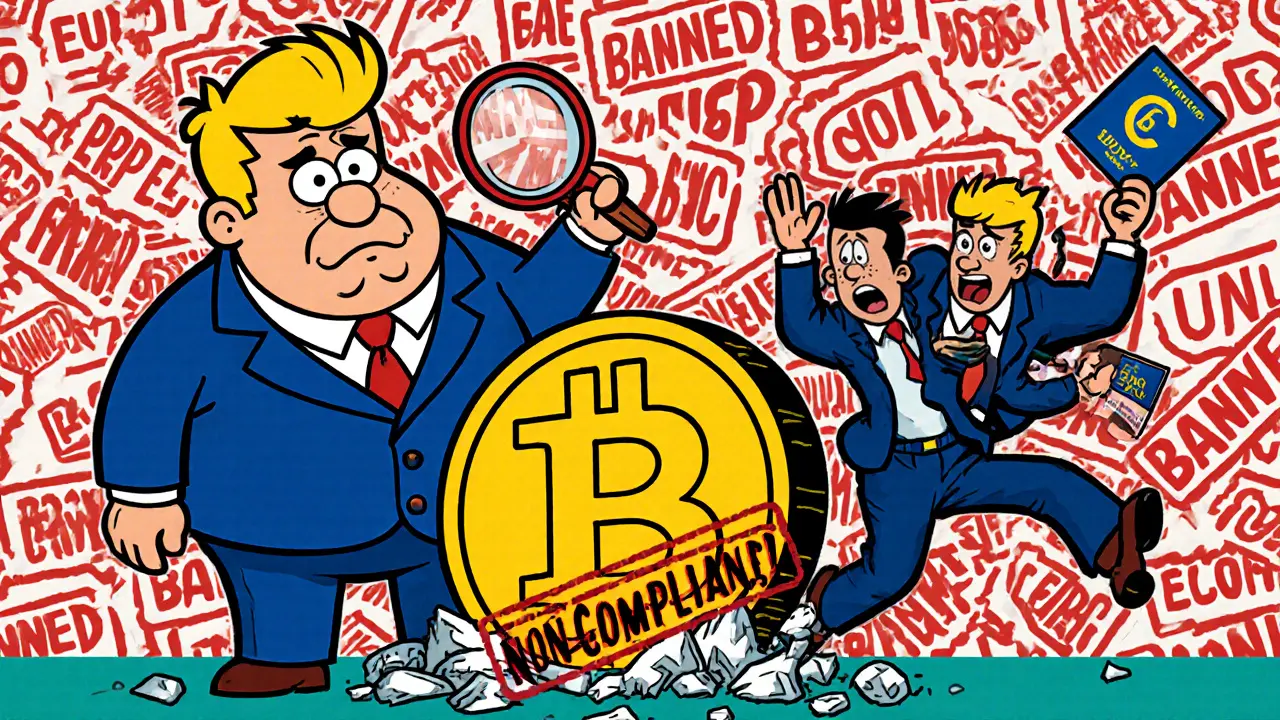USDT Conversion Calculator
EU Stablecoin Conversion Guide
Calculate how much your USDT would be worth in MiCA-compliant stablecoins now that USDT is banned in the EU.
USDT
On July 1, 2025, USDT stopped trading on all major cryptocurrency exchanges in the European Union. Not because it collapsed. Not because it was hacked. But because it failed to meet the EU’s new rules for stablecoins under MiCA - the Markets in Crypto-Assets Regulation. This isn’t a temporary pause. It’s a permanent ban for non-compliant assets. And it’s reshaping how millions of Europeans hold and move value in crypto.
Why MiCA Changed Everything
MiCA didn’t come out of nowhere. It was years in the making. The European Union realized that crypto assets, especially stablecoins, were growing fast but operating in a legal gray zone. Some platforms claimed to be backed by cash. Others said they used complex algorithms. No one knew what was real. Investors got burned. Banks got nervous. Regulators had to act. MiCA, which became fully enforceable on December 30, 2024, created clear rules for anyone issuing or trading crypto in the EU. It split stablecoins into two types: Electronic Money Tokens (EMTs) and Asset-Referenced Tokens (ARTs). USDT falls into the EMT category - it’s supposed to be worth exactly $1, backed 1:1 by reserves. But here’s the catch: MiCA demands more than just a promise. It requires proof.What USDT Got Wrong
Tether Limited, the company behind USDT, has always said its reserves are fully backed. But MiCA doesn’t accept statements. It demands transparency - and it wants it audited, documented, and public. USDT failed three critical tests:- Reserve transparency: MiCA requires real-time access to reserve composition. Tether only releases quarterly reports, and even those don’t show exactly what assets back the coins - just broad categories like “commercial paper” or “treasury bonds.”
- Independent audits: Audits must be done by third parties and published regularly. Tether’s audits are delayed, incomplete, and often lack the detail regulators demand.
- AML/KYC automation: MiCA forces issuers to build systems that automatically track and verify users. Tether’s systems are outdated, manual, and not integrated into EU financial infrastructure.
How Exchanges Responded
Exchanges didn’t wait for regulators to come knocking. They acted fast - because staying compliant was the only way to keep operating in Europe. OKX was the first to go. In early 2025, it removed all USDT trading pairs from its EU platform. Coinbase followed in February, sending emails to users: “Convert your USDT to USDC or EURC before June 30.” Binance took a phased approach: first, they blocked new USDT purchases. Then, they made it sell-only. By March 31, 2025, USDT was gone entirely from Binance’s EU platform. These weren’t just business decisions. They were survival moves. If an exchange kept USDT, it risked losing its license. That means no more customers. No more revenue. No more future. Even exchanges outside the EU - like those in the UK or Switzerland - started limiting USDT for EU customers. Why? Because they had to comply with MiCA when serving EU residents. Geography doesn’t matter anymore. If you’re trading with someone in Germany, you follow German rules.
Who’s Winning Now?
With USDT out, the market needed replacements. Five stablecoins have stepped in - all MiCA-compliant, all authorized by EU regulators.- EURC (Circle): Backed by euros, issued by Circle (same company behind USDC). Fully audited, real-time reserve reports, built for Europe.
- USDC (Circle): Even though it’s dollar-backed, USDC met MiCA’s standards because Circle invested heavily in compliance infrastructure - something Tether never did.
- Eurocoin (Trezor): A European-native stablecoin, fully regulated by Luxembourg’s financial authority.
- DAI (MakerDAO): After months of updates, DAI gained MiCA approval as an ART, using a mix of collateral assets instead of a single currency.
- AEUR (Aave): A euro-backed token built on Aave’s open-source protocol, with full audit trails and KYC integration.
What Happens to Your USDT?
If you still hold USDT in a European wallet, you’re not frozen. But you can’t trade it on regulated platforms. You can’t convert it to EUR or USD through licensed exchanges. You can’t use it to pay for goods or services on EU-based crypto merchants. Your options are limited:- Move it off the EU: Transfer USDT to a non-EU exchange (like Binance.US or KuCoin) and sell it there. But be warned - sending crypto across borders can trigger AML flags, especially if the amount is large.
- Hold it: If you’re not trading, you can keep it. But you lose access to DeFi apps, staking, and lending platforms in the EU.
- Convert it now: Use a peer-to-peer platform like LocalCryptos or Paxful to swap USDT for cash or another asset. But be careful - P2P carries higher risk of scams and fraud.


Atheeth Akash
November 12, 2025 AT 09:53still cant believe they banned it for not being transparent enough when half the banks are worse
James Ragin
November 13, 2025 AT 11:10Ainsley Ross
November 14, 2025 AT 11:28USDT was always a house of cards wrapped in a whitepaper. USDC and EURC? They're built with transparency, audits, and real legal backing. This isn't a ban - it's an upgrade. And honestly? If you're still clinging to USDT, you're not protecting your assets - you're clinging to a myth.